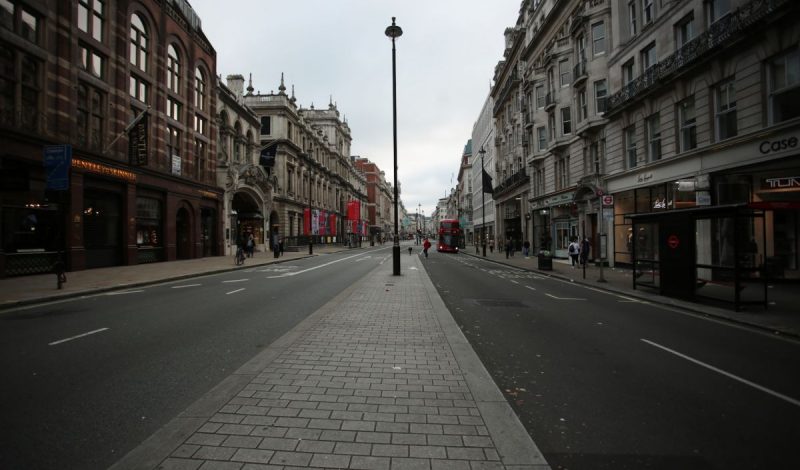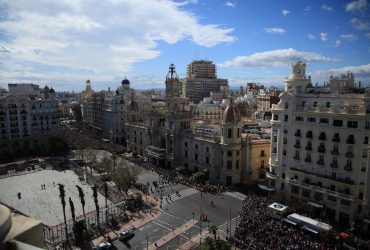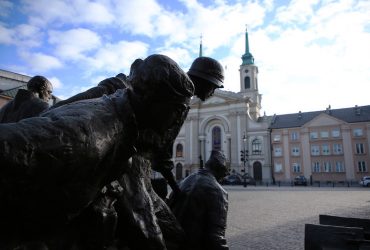London is a city that changes at the speed of light: you see a skyline today, and in two months it will be completely different! It’s equally valid, however, that there are a lot of buildings which hides many stories from the past, to tell them to those who visit the English capital in present times.
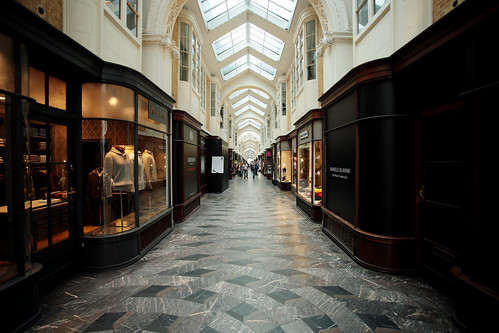 So, today, I will tell you some of the most particular stories of London to take you to discover the past and the present of the English capital. Let’s start from the Burlington Arcade in Piccadilly, next to the building of the Royal Academy of Art. It dated back to 1906 and was built because the owner of the building where today is the headquarters of the Royal Academy complained that he couldn’t stay in his garden without falling objects like apple cores, bottles and dead cats hit him on his head.
So, today, I will tell you some of the most particular stories of London to take you to discover the past and the present of the English capital. Let’s start from the Burlington Arcade in Piccadilly, next to the building of the Royal Academy of Art. It dated back to 1906 and was built because the owner of the building where today is the headquarters of the Royal Academy complained that he couldn’t stay in his garden without falling objects like apple cores, bottles and dead cats hit him on his head.
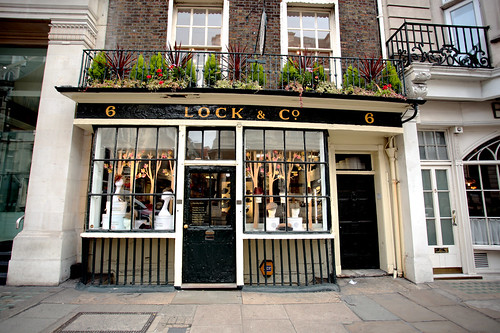 Today, fortunately, in London you can still find some of its oldest shops. “Lock & Co. Hatters“, founded in 1600, is one of these stores: located in St. James’s street, a small street not far from the Burlington Arcade, this is the oldest hat shop in town, and the Londoners still come here to buy hats. The nearest underground stop is Green Park (Jubilee, Victoria and Piccadilly line).
Today, fortunately, in London you can still find some of its oldest shops. “Lock & Co. Hatters“, founded in 1600, is one of these stores: located in St. James’s street, a small street not far from the Burlington Arcade, this is the oldest hat shop in town, and the Londoners still come here to buy hats. The nearest underground stop is Green Park (Jubilee, Victoria and Piccadilly line).
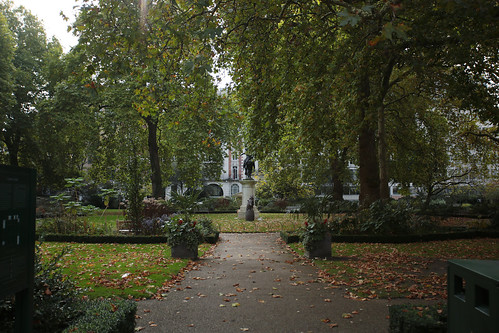 Right in the centre of St James’s Square, less than a few minutes from the shop I have just mentioned, there is a statue of William III. This statue was erected in the centre of the private garden of this square following complaints from the inhabitants of the area for bums and garbage. But for its construction, there were several different problems: first, nobody wanted it because the idea that it was dedicated to William III did not please anyone; later the money for the construction ended: when a merchant left it as a legacy, this legacy was contested by the merchant’s heirs. In short, from what was needed to eliminate some problems became a reason for quarrel. The nearest metro stop is always Green Park (Jubilee, Victoria and
Right in the centre of St James’s Square, less than a few minutes from the shop I have just mentioned, there is a statue of William III. This statue was erected in the centre of the private garden of this square following complaints from the inhabitants of the area for bums and garbage. But for its construction, there were several different problems: first, nobody wanted it because the idea that it was dedicated to William III did not please anyone; later the money for the construction ended: when a merchant left it as a legacy, this legacy was contested by the merchant’s heirs. In short, from what was needed to eliminate some problems became a reason for quarrel. The nearest metro stop is always Green Park (Jubilee, Victoria and
 Piccadilly line). Along the Mall is the Duke of York’s column, built to commemorate Frederick, Duke of York and son of George III. What were the merits of the duke? Nobody but being very good at accumulating debts! The column had to be very high as high as possible, “to protect the duke from creditors”. Obviously, no one wanted to pay for its construction, and so the government decided to take off a payday to the soldiers to get the necessary money.The nearest underground stop is Charing cross (Bakerloo and northern line). Do you know which is the oldest bank in the country? The Drummonds Bank!
Piccadilly line). Along the Mall is the Duke of York’s column, built to commemorate Frederick, Duke of York and son of George III. What were the merits of the duke? Nobody but being very good at accumulating debts! The column had to be very high as high as possible, “to protect the duke from creditors”. Obviously, no one wanted to pay for its construction, and so the government decided to take off a payday to the soldiers to get the necessary money.The nearest underground stop is Charing cross (Bakerloo and northern line). Do you know which is the oldest bank in the country? The Drummonds Bank!
 The building is located on the south side of Trafalgar Square, and the bank was founded by Mr Drummonds, of Scottish origin: this will have influenced the fact that, today, the building is home to the Bank of Scotland (or so it seems since there are plaques)? It is not immediate to understand which is the building because there are no indications concerning the Bank of Scotland and the plate and engraving relating to the Drummonds family are not very visible if you are not near the building itself. The nearest underground stop is Charing cross (Bakerloo and northern line).
The building is located on the south side of Trafalgar Square, and the bank was founded by Mr Drummonds, of Scottish origin: this will have influenced the fact that, today, the building is home to the Bank of Scotland (or so it seems since there are plaques)? It is not immediate to understand which is the building because there are no indications concerning the Bank of Scotland and the plate and engraving relating to the Drummonds family are not very visible if you are not near the building itself. The nearest underground stop is Charing cross (Bakerloo and northern line).
 Did you know that the (past) centre of London is located in Trafalgar Square, at the southern end of the square? As I said at the beginning of the post, London is a city that changes at the speed of light and the plaque that indicates the city centre of the past helps to understand this speed better. The plate is located behind the equestrian statue of Charles I, at the southern end of Trafalgar square: this plaque was laid precisely halfway between the city and the parliament building, in what was the exact city centre (identified with the Charing cross area). The closest underground stop is Charing Cross (Bakerloo and northern line).
Did you know that the (past) centre of London is located in Trafalgar Square, at the southern end of the square? As I said at the beginning of the post, London is a city that changes at the speed of light and the plaque that indicates the city centre of the past helps to understand this speed better. The plate is located behind the equestrian statue of Charles I, at the southern end of Trafalgar square: this plaque was laid precisely halfway between the city and the parliament building, in what was the exact city centre (identified with the Charing cross area). The closest underground stop is Charing Cross (Bakerloo and northern line).
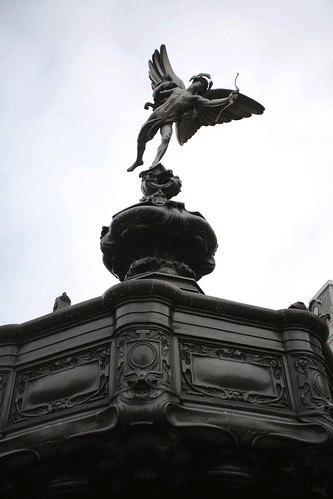 Even Piccadilly Circus, a square that we all know even without ever having been in London, has some stories to tell. In particular, the strangest story is that concerning the famous statue of Eros that we all know. First of all, did you know that it does not seem to be about Eros, but about a representation of the angel of Christian charity? It seems a little bit strange, because of the bow in his hand and for this, I am looking for further sources of this aspect of its history, which is curious also seen under what name the statue has become famous. The story of this figure, however, has another strange aspect: it seems that the icon is looking in the wrong direction! The initial project saw it turned towards Shaftesbury Avenue, and because of that the Eros was turned and turned in an attempt to fix without ever being successful. For my next trip to London, I will study his story better. The nearest underground stop is, of course, that of Piccadilly Circus (Bakerloo and Piccadilly line).
Even Piccadilly Circus, a square that we all know even without ever having been in London, has some stories to tell. In particular, the strangest story is that concerning the famous statue of Eros that we all know. First of all, did you know that it does not seem to be about Eros, but about a representation of the angel of Christian charity? It seems a little bit strange, because of the bow in his hand and for this, I am looking for further sources of this aspect of its history, which is curious also seen under what name the statue has become famous. The story of this figure, however, has another strange aspect: it seems that the icon is looking in the wrong direction! The initial project saw it turned towards Shaftesbury Avenue, and because of that the Eros was turned and turned in an attempt to fix without ever being successful. For my next trip to London, I will study his story better. The nearest underground stop is, of course, that of Piccadilly Circus (Bakerloo and Piccadilly line).
 Not far away, on the Strand, there is the small church of St Mary le Strand. What’s wrong with it? Just that this church is precisely in the middle of the road, which then splits and the cars run around it! In the beginning, when the church was built, the street had a different conformation. When the city decided to work to extend the Strand, the church was not demolished, but merely surrounded by the new street.
Not far away, on the Strand, there is the small church of St Mary le Strand. What’s wrong with it? Just that this church is precisely in the middle of the road, which then splits and the cars run around it! In the beginning, when the church was built, the street had a different conformation. When the city decided to work to extend the Strand, the church was not demolished, but merely surrounded by the new street.
This church also hides another small detail, perhaps even slightly macabre. Its small cloister worked, initially, also as a cemetery, and the space was so limited that the bodies were buried one above the other. When the street was renovated there was the need to uncover the small cemetery to move it and the company that took care of the works he had to suspend them. The area needed to stay close to human (and cars) passage because of gases deriving from the decomposition of the bodies. Still along the Strand and not far from St Mary you can find the church of St. Clement Danes, whose fate was the same as the previous one except for what concerns the cemetery. For both churches, the nearest subway stop is Temple (Circle and District line).
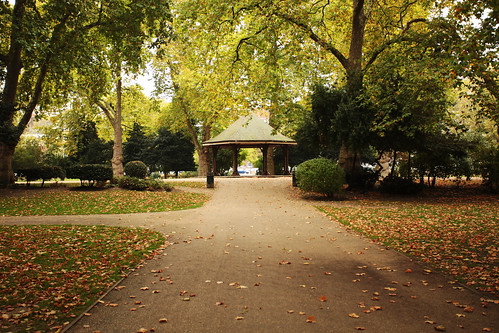 Lincolnn’s inn field is described as one of the largest squares in London, although it does not seem. His story begins when, in 1638, William Newton obtained permission to build thirty-two houses around the green space in the centre of the square. One of the original homes, designed by Inigo Jones, has survived and today is divided between the numbers 59 and 60. Also in the northwest corner, where the Newcastle House is located, there is still something of the 17th-century building built by Captain Winde . If you arrive here, I recommend a walk inside the small park, which during the change of season between summer and autumn is even more beautiful.
Lincolnn’s inn field is described as one of the largest squares in London, although it does not seem. His story begins when, in 1638, William Newton obtained permission to build thirty-two houses around the green space in the centre of the square. One of the original homes, designed by Inigo Jones, has survived and today is divided between the numbers 59 and 60. Also in the northwest corner, where the Newcastle House is located, there is still something of the 17th-century building built by Captain Winde . If you arrive here, I recommend a walk inside the small park, which during the change of season between summer and autumn is even more beautiful.
The nearest underground station to get to Lincolnn’s inn field is Holborn, along with the central line.
NB: All these places I spoke to you can be reached on foot by taking a nice walk; you could do this ride in the morning (or afternoon, of course). They are all central places within zone 1.

